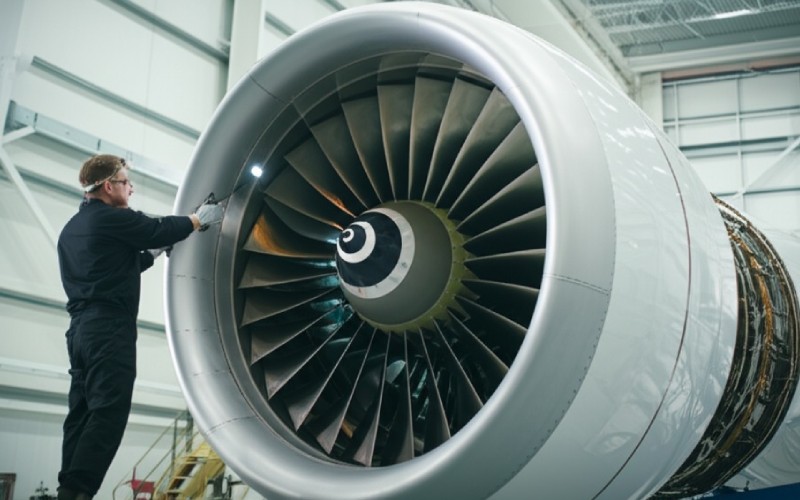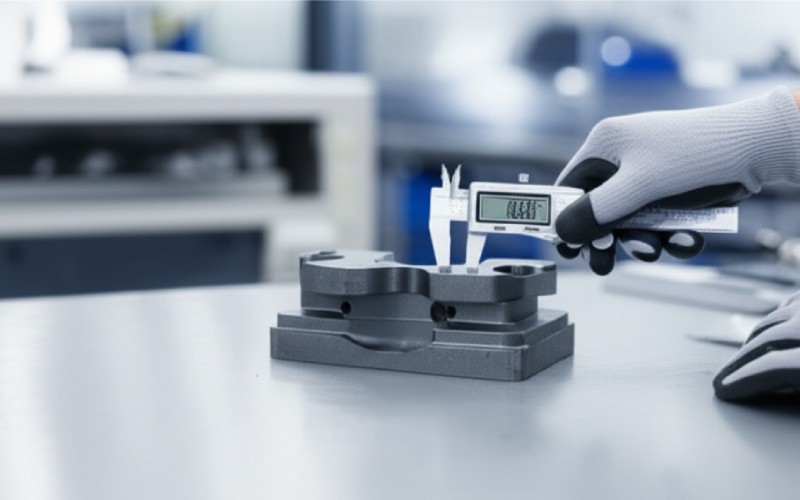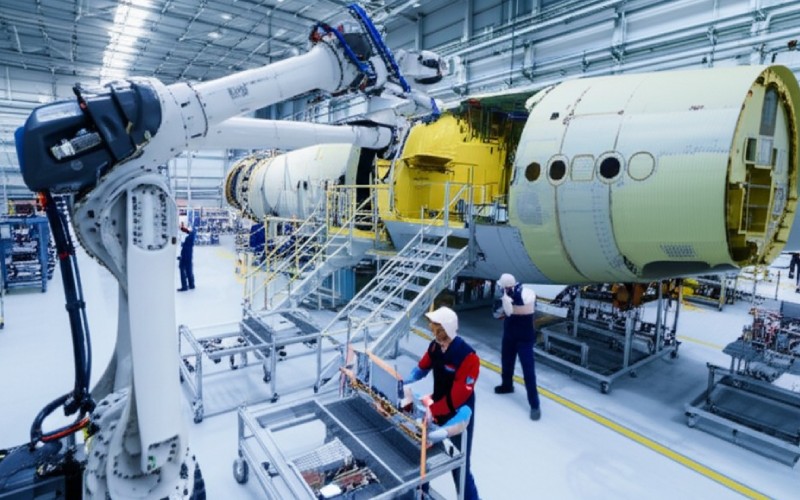Let Sino's Lamination Stacks Empower Your Project!
To speed up your project, you can label Lamination Stacks with details such as tolerance, material, surface finish, whether or not oxidized insulation is required, quantity, and more.

In this post, I will tell you all about AS9100 certification. I will use simple words to share what I have learned. This will help you understand why AS9100 is so important. It will help you see how to get your AS9100 certificate. This guide is worth your time if you work in aerospace, space, or defense.
AS9100 is a set of rules. These rules are for companies that make things for airplanes and spacecraft. We call this the aerospace industry. The AS9100 standard is very important. It helps make sure every part is safe and good. This is a key quality standard for the aerospace industry. The goal of AS9100 is to have great quality and safety.
I once knew a small shop. They made good parts. But big companies would not buy from them. Why? They did not have an AS9100 certification. This piece of paper shows you follow the rules. It shows you care about quality. Getting the AS9100 certification changed their business. This standard is a must-have. Without AS9100, you can not work with top aerospace manufacturers. The AS9100 standard is your ticket to the big leagues. It is the recognized standard for quality management in our field.
The history of AS9100 is interesting. Long ago, there were many different rules. Each big company had its own standards for quality. This was hard for a small supplier. A supplier had to follow many different rules for each customer. It was a lot of work. The aerospace industry needed one set of rules for all. This led to the creation of the AS9100 system standard.
So, a group was formed. It was called the International Aerospace Quality Group. They worked closely with the ISO. They wanted to make one strong standard for the aviation, space, and defense fields. The AS9100 standard was first released in 1999. It was built on a standard called ISO 9001. The evolution of AS9100 has continued since then. Each revision makes it better. It helps address new needs in the aerospace industry. The goal was to make a single set of standards for quality management systems.

It is a good question. Think of it like this. ISO 9001 is a good, basic recipe for quality. Many types of companies use the ISO 9001 standard. It gives you the main quality management principles. The AS9100 standard is based on ISO 9001. This means it includes all the rules of ISO 9001.
But AS9100 adds more. The aerospace industry needs extra safety. So, AS9100 has additional requirements. These are things not found in the basic version of ISO 9001. For example, AS9100 has strict rules for risk management. It has rules for configuration management, which is tracking changes to a part. It also has rules for counterfeit parts prevention. This is very important. You do not want fake parts on a plane. The AS9100 standard was made to address the specific requirements of our work.
I saw a company try to use only ISO 9001. They failed their customer audit. They did not have the extra controls that AS9100 demands. Their quality management system was not strong enough. The AS9100 certification process is more detailed for a reason. It adds requirements for aviation, space, and defense. It is all about safety and trust. The AS9100 standard is more than ISO 9001.
An AS9100 quality management system has many parts. It is a system for how you do your work. It helps you make good products and services every time. It is built on the seven quality management principles. These include a focus on the customer and good leadership. When you implement AS9100, you build this system. Your quality management system must meet all AS9100 requirements.
The core of your AS9100 quality management system is documentation. You must write down how you do things. How do you make a part? How do you check it? How do you fix mistakes? This must all be written down. Another key part is your management review. Leaders must check on the system. They must make sure it is working. The AS9100 standard requires this. Your aerospace quality management system shows how you meet customer requirements.
Your quality management system must also include internal auditing. This means you check your own work. You look for problems before a real audit. This is one of the requirements for a quality management system that follows AS9100. When you build this system, you are building a better company. An AS9100 quality management system is a path to success. These quality management system requirements make you better.
To meet AS9100 rules, you need a plan. You can not do it overnight. The first step is to learn. You must understand the AS9100 standard. Read it. Study it. You need to know all the requirements specific to AS9100. This includes the requirements for the aerospace industry. These are rules that go beyond ISO 9001.
Next, you need to look at your own company. This is called a gap analysis. You see what you already do well. You see where you need to improve to meet AS9100 standards. You might need to change how you work. You will need to create your AS9100 quality management documents. This takes time. You need to train your people. Everyone must know their role in the quality and safety plan. Following AS9100 is a team effort.
When I help companies with this, we make a checklist. We go through every part of the AS9100 standard. We make sure there is a process for everything. This is how you get ready for your certification audit. Being prepared is the key to getting your AS9100 certification. It takes work, but it is worth it. Compliance with AS9100 is a big step.
The AS9100 standard has changed over time. Each new version of AS9100 is a revision. It is updated to keep up with the aerospace industry. The first one was AS9100. Then came AS9100 Rev A, Rev B, and Rev C. Each revision added new rules or made old ones clearer. This process is part of the evolution of AS9100.
Today, the one most companies use is AS9100 Rev D. This is the latest version of the standard. It was released in 2016. It lines up with the newest version of ISO 9001. AS9100 Rev D put a big focus on risk management. It also added rules for product safety and stopping fake parts. There is also an AS9100 series of standards. AS9100 is for makers. There is also AS9110 for repair stations and AS9120 for distributors. Each one is a little different.
It is important to know which version of AS9100 you need. If you are getting a new certification, you will need AS9100 Rev D. This AS9100 revision has the newest requirements along with ISO 9001:2015. The quality management system standard gets better with each update. Your audit will check that you follow the correct AS9100 rev.
The AS9100 audit can feel scary. But if you are ready, it is just a check-up. An audit is when an outside person comes to your company. This person is an auditor. They work for a certification body. Their job is to check if your company meets the requirements of AS9100. They look at your quality management system. They check your papers. They talk to your people.
The AS9100 certification process has two main stages. The Stage 1 audit is a document review. The auditor checks your manuals and plans. They see if you are ready for the next step. The Stage 2 audit is the big one. The auditor comes to your shop. They watch you work. They ask questions. They want to see that you do what your papers say you do. This is the main certification audit.
If you pass, you get your AS9100 certification. If there are small problems, you will have time to fix them. The goal of the audit is not to fail you. It is to make sure you have a strong system. A good audit can even help you find ways to be better. The AS9100 audit is the final test before you get your AS9100 certificate.
The benefits of AS9100 are huge. I have seen it again and again. The biggest benefit is getting more work. Many big aerospace companies will only work with a supplier that has AS9100 certification. They require AS9100. It shows them you are serious about quality. Getting AS9100 certified opens doors.
Another one of the benefits of as9100 is a better company. When you implement a quality management system, you get more organized. You find and fix problems faster. You waste less time and money. Your products and services get better. This makes your customers happy. The AS9100 framework pushes you to improve all the time.
Finally, AS9100 certification helps reduce risk. The rules in AS9100 are all about safety. By following them, you make your parts safer. This is the most important thing in the aerospace sector. Lives depend on the work we do. The AS9100 standard helps protect your company, your customers, and the people who fly. Certification to AS9100 is a sign of trust.
So, who needs to be AS9100 certified? The simple answer is any company that designs, makes, or sells parts for the aviation, space, and defense fields. This includes big aerospace manufacturers and suppliers. It also includes the small machine shop that makes a single bolt for a plane. If your part goes into an aircraft or a rocket, you likely need AS9100.
I have seen companies think they are too small for AS9100. That is not true. Being a certified supplier can be a great advantage for a small firm. It shows you can compete with the big players on quality. AS9100 certification is often a regulatory requirement or a customer requirement. If your customer asks for it, you need it.
Your role in the supply chain matters. A company that makes raw metal may not need AS9100. But the company that turns that metal into a plane part does. Any supplier that provides key products and services to the aerospace sector should look into AS9100 certification. It is the main standard for aerospace quality. The requirements of the aerospace sector are high. AS9100 helps you meet them.

Yes, there are costs associated with AS9100. It is an investment. You have to pay for the certification body. They do the audit and give you the certificate. This is a direct cost. You may need to hire a consultant to help you prepare. That is another cost. I always tell people to plan for these costs.
There are also internal costs. Your team will spend time implementing a quality management system. They will spend time on training and on the audit itself. This is time they are not spending on other work. You may need to buy new tools or software to meet the system requirements. These are the hidden costs associated with AS9100.
But I want you to think of it as an investment, not just a cost. The money you spend on your AS9100 certification can come back to you. You get access to new customers. You can charge a fair price for high-quality work. You become more efficient. Over time, the AS9100 standard can make you more money than it costs. AS9100 is not just a cost; it is a path to growth. It sets the standards for quality.